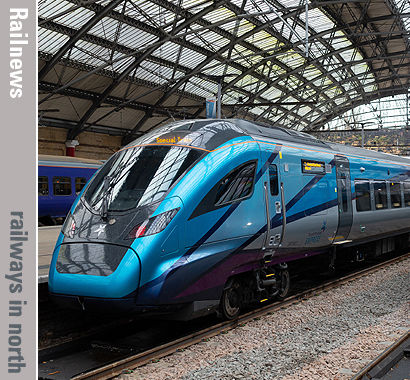A REPORT from the high speed rail pressure group Greengauge 21 is urging the government to improve railways in the north of England soon, and not to wait until HS2 arrives in the 2040s.
The group says important work should be carried out over the next five to ten years, to ease congestion in the centre of cities like Manchester and provide frequent ‘metro’ services based on the example of Thameslink in the London area.
It points to the building of motorways in the 1960s and 1970s, when new sections were added progressively, and says an ‘incremental’ approach would work for the rail network as well. It also says action has become still more urgent because of the present Covid-19 pandemic, because the government needs to support public works which can be completed quickly and so help to restart the economy.
The report, ‘Revisiting High Speed North’, highlights that railway routes in the north are often overloaded by all kinds of traffic, including freight, which moves at an average speed of 25km/h along the TransPennine lines.
Another pinch point is the notorious Castlefield corridor in central Manchester, where local and commuter services share a key section with intercity trains and freight and delays are frequent.
The answer, says the report, is a new ‘Super Hub’ at Piccadilly, including subsurface platforms and a new tunnel from Ordsall in the west into Piccadilly, which could be used by regional and intercity passenger trains, taking significant pressure off the present Castlefield corridor. It also points out that there is no need to wait for HS2 before making such an upgrade, which would make Piccadilly ‘one of the best connected transport hubs in the entire country’. The Castlefield line would also become a ready-made ‘Picc-Vic’ link, with three intermediate city centre stations. Together with the new Ordsall viaduct, this link could carry a Thameslink-style metro service for places like Rochdale and Burnley.
Freight services, meanwhile, should be expanded and more of them hauled by electric traction.
The effect of the various projects, says the report, would be to connect the region’s labour markets, including the more ‘challenging’ areas such as Wigan, Stalybridge, Huddersfield, Bradford, Sunderland and St Helens.
The report is an updated version of a document first published in 2014, and is intended to complement the government’s own High Speed North programme.
The report’s co-authors are Ian Wray, David Thrower and Jim Steer.
They said: ‘Simply put, the rail network in Manchester, Liverpool, Leeds and Sheffield does not work- the North deserves better. The North will benefit from the arrival of HS2 and NPR, but these are long term schemes that will not be delivered to the North until the 2040s. So, it is important that steps are taken in the Government’s new integrated rail plan, known as High Speed North, to address immediate concerns in the existing network.
‘It’s not enough to provide fast links between the major cities of the North. It is also essential to overcome existing bottlenecks, and to tie together more distant labour market areas and towns with the centres of the major cities like Leeds, Manchester, Liverpool and Sheffield.
‘Ultimately we do need a grand design, but we need a realistic delivery programme too.’


